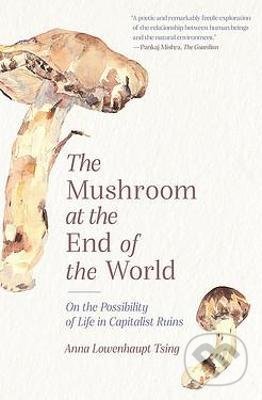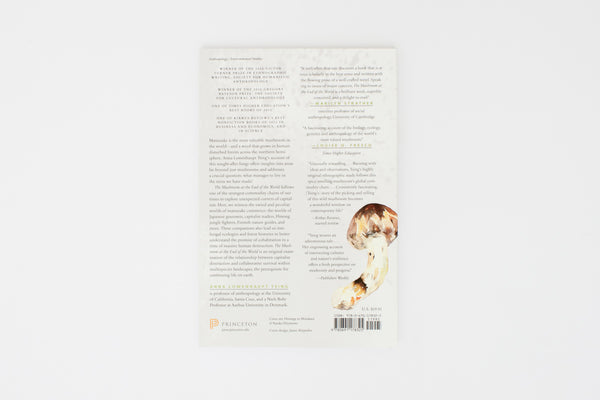


She analyses how the mushroom makes its journey from spore to fruiting body of the mycelium, picked and sold, until once it's on its way in a crate it has become a 'full capitalist commodity', whereafter it becomes entwined again in cultural practices of giving and ceremony and the non-capitalist values that encompasses.

She draws parallels in between the mushroom itself and how it only grows in a ravaged landscape and how people (could) live. She goes into great detail in how the mushroom is foraged and traded and what the customs and beliefs of the migrant as well as the white pickers and sellers are. At the same time she tries to take these scenarios as examples for living in precarity. This is what she calls 'salvage accumulation', whereby common resources are turned into private profits. This is where southeast Asian migrants (war refugees) started to make a living from this mushroom, picking them on common land and selling them in the 'open ticket' market in Vancouver. However, due to human intervention in the forests of Oregon, the mushroom started to flourish. The mushroom was a delicacy in Japan because it was so rare and only grows in certain pine forests. Tsing takes you through the complete value chain of the Matsutake mushroom and uncovers as far as I can remember two kinds of stories about capitalism that are intertwined. These companions also lead us into fungal ecologies and forest histories to better understand the promise of cohabitation in a time of massive human destruction.įirst of all I should say that this kind of anthropological, ethnographic combined with biological, environmental research is quite new to me. Here, we witness the varied and peculiar worlds of matsutake commerce: the worlds of Japanese gourmets, capitalist traders, Hmong jungle fighters, industrial forests, Yi Chinese goat herders, Finnish nature guides, and more. In all its contradictions, matsutake offers insights into areas far beyond just mushrooms and addresses a crucial question: what manages to live in the ruins we have made?Ī tale of diversity within our damaged landscapes, The Mushroom at the End of the World follows one of the strangest commodity chains of our times to explore the unexpected corners of capitalism. It is also an edible delicacy in Japan, where it sometimes commands astronomical prices. Through its ability to nurture trees, matsutake helps forests to grow in daunting places. Matsutake is the most valuable mushroom in the world - and a weed that grows in human-disturbed forests across the northern hemisphere.


 0 kommentar(er)
0 kommentar(er)
